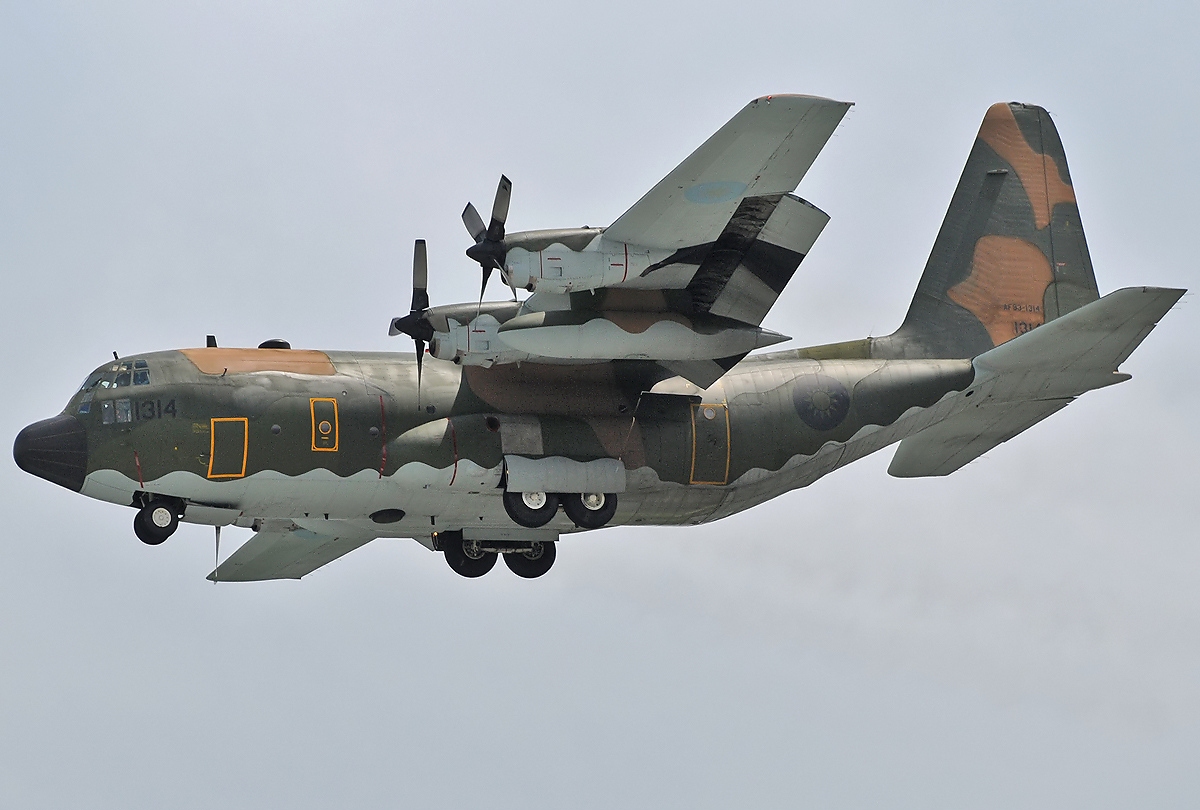Taiwan’s Air Force has given the green light to upgrade the avionics systems of its 20 C-130 transport aircraft, according to the Taiwan-based media outlets.
The planned upgrades aim to maintain the ongoing performance and functionality of Taiwan’s aging C-130 aircraft. Presently, the fleet comprises 19 C-130H aircraft and one C-130HE, which is designed for electronic warfare.
Any additional decisions regarding potential improvements to the aircraft’s defense capabilities will be evaluated further.
In October, a Taiwan Air Force delegation will travel to the United States to participate in the 2023 C-130 Technical Coordination Group World Wide Review.
This event, endorsed by the US Air Force, serves as a platform for sharing new technologies and enhancements that enable participating nations to maintain the operational capabilities of the C-130 aircraft, Liberty Times reported.

During the event, the delegation will collect valuable information regarding the latest operational experiences and conditions from the US military and other nations and discuss implementing relevant upgrades.
The 2023 World Wide Review will be held in Orlando, Florida, from October 23 to October 27. Taiwan’s Air Force personnel have also participated in past editions of this event, including in 2019, 2021, and 2022.
In December 2022, the US government approved a sale involving essential spare aircraft parts to support Taiwan’s C-130 transport plane fleet.
However, reports from local media have not specified the precise details of what will be encompassed in the proposed upgrade of the avionics systems for the C-130 fleet.
Taiwan must prioritize the ongoing enhancements to its C-130 fleet to maintain operational effectiveness.
Due to its circumstances, Taiwan faces a multidimensional security threat, essentially from the People’s Republic of China (PRC), which entirely claims Taiwan to be its territory.
The C-130’s capability to ferry troops and equipment significantly fortifies Taiwan’s comprehensive defense readiness. This, in turn, facilitates the swift reinforcement of critical regions should a military crisis arise.
Taiwan’s C-130 Hercules
On June 18, 1984, the Reagan administration officially notified Congress about the proposed sale of 12 C-130H aircraft to Taiwan, which Congress later approved. These C-130H planes were intended to supplement and eventually replace the aging C-119 aircraft.
The delivery of these C-130H aircraft commenced in December 1986. The first two C-130H aircraft arrived at Pingtung on September 22, 1986.
In the early 1990s, an additional order was placed for four more C-130H aircraft, delivered to Taiwan in January 1995. Subsequently, in 1997, a contract for an additional four C-130H aircraft was signed. These “white-tail” C-130s were supplied in December of the same year.
Nine days following the delivery of the new C-130H aircraft, all C-119 aircraft were officially decommissioned. Notably, some newly acquired C-130H aircraft had passenger-carrying pallets featuring airline-style seats. This customization allowed for easy conversion of these C-130H aircraft for VIP transport.
The C-130 has established itself as an unmatched, reliable workhorse, prepared to undertake missions in any location and at any time. Primarily, the C-130 Hercules handles the tactical aspect of airlift operations.

It can operate from rugged, unpaved landing strips and is the primary aircraft for delivering troops and equipment via airdrops in hostile environments.
Utilizing its rear loading ramp and door, the C-130 can accommodate a wide range of oversized cargo, such as utility helicopters and six-wheeled armored vehicles, to standard palletized cargo and military personnel.
In its capacity for aerial delivery, it can either perform airdrops of loads weighing up to 42,000 pounds or utilize its high-flotation landing gear to touch down and transport cargo on rugged, unpaved terrain.
The adaptable design of the Hercules allows it to be customized for various missions, enabling a single aircraft to fulfill multiple roles.
Many specialized mission enhancements incorporated into the Hercules can be detached, permitting the aircraft to revert to its core cargo delivery function if needed.
Furthermore, the C-130 can be swiftly reconfigured to handle diverse cargo types, such as palletized equipment, floor-loaded materials, airdrop platforms, container delivery system bundles, vehicles, and personnel, or for aeromedical evacuation purposes.
- Contact the author at ashishmichel(at)gmail.com
- Follow EurAsian Times on Google News




